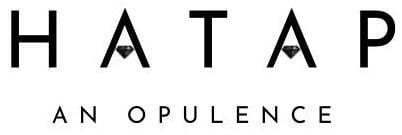Introduction
When it comes to buying a diamond, whether for an engagement ring, a gift, or a personal treasure, understanding the 4 C’s of diamonds is essential. These four characteristics: Cut, Color, Clarity, and Carat Weight define a diamond’s beauty, quality, and value. Knowing how each “C” influences the diamond can help you make an informed decision and select a stone that perfectly matches your preferences and budget.
In this guide, we’ll break down the 4 C’s of diamonds, explaining their importance and how they work together to determine a diamond’s worth.
1. Cut: The Sparkle Factor
The cut of a diamond is perhaps the most important of the four C’s because it determines how brilliantly the diamond sparkles. While many people confuse cut with the diamond’s shape (like round, oval, or princess), it actually refers to how well the diamond’s facets interact with light
A well-cut diamond reflects light beautifully, giving it that mesmerizing sparkle. If a diamond is cut too shallow or too deep, it can lose brilliance and appear dull.
Cut Grades:
•Excellent/Ideal – Maximum brilliance and fire.
•Very Good – High brilliance with minor differences.
•Good – Decent sparkle, often more affordable.
•Fair/Poor – Less brilliance due to improper light reflection.
Tip: Always prioritize cut quality if you want a diamond that truly shines.
2. Color: The Diamond’s Hue
Diamonds naturally occur in a range of colors, but the most valuable are colorless or nearly colorless. The Gemological Institute of America (GIA) grades diamond color on a scale from D (colorless) to Z (light yellow or brown).
Color Grades:
• D-F – Completely colorless (rare and most valuable).
• G-J – Near colorless (excellent value with slight warmth).
• K-M – Faint yellow (noticeable color, more affordable).
• N-Z – Very light to light yellow (least expensive).
Tip: For the best balance between beauty and value, many buyers choose diamonds in the G-H range, which appear colorless to the naked eye.
3. Clarity: Flawless or Flawed?
Clarity measures the presence of inclusions (internal flaws) and blemishes (surface imperfections) in a diamond. While no diamond is entirely perfect, the fewer and smaller the imperfections, the more valuable the stone.
Clarity Grades:
• FL (Flawless) – No internal or external flaws (extremely rare).
• IF (Internally Flawless) – No internal flaws, only surface marks.
• VVS1-VVS2 (Very, Very Slightly Included) – Minute inclusions visible under 10x magnification.
• VS1-VS2 (Very Slightly Included) – Minor inclusions barely noticeable.
• SI1-SI2 (Slightly Included) – Noticeable inclusions under magnification, sometimes visible to the naked eye.
• I1-I3 (Included) – Visible inclusions that affect brilliance.
Tip: VS1-VS2 diamonds offer a balance of clarity and price while appearing flawless without magnification.
4. Carat Weight: Size Matters (or Does It?)
Carat weight refers to how much a diamond weighs, not its size. 1 carat equals 0.2 grams. While larger diamonds are rarer and more valuable, carat weight alone does not determine a diamond’s beauty—cut quality plays a huge role.
Common Carat Sizes:
•0.50 carat – Petite and elegant.
•1.00 carat – Classic and popular.
•1.50 carat – Larger and more impressive.
•2.00+ carats – Rare and luxurious.
Tip: A well-cut 0.90-carat diamond can look as big as a 1.00-carat diamond while saving you money.
Conclusion: Your Diamond, Your Story
Understanding the 4 C’s of diamonds empowers you to choose a diamond that reflects your style, story, and budget. Whether you prioritize sparkle, size, or perfection, each “C” plays a role in the diamond’s beauty and value.
When you’re ready to make a purchase, keep these factors in mind to select a diamond that will shine for a lifetime.
Looking for the perfect diamond? Explore our collection of expertly crafted moissanite and natural diamonds that deliver beauty and brilliance for every occasion.
